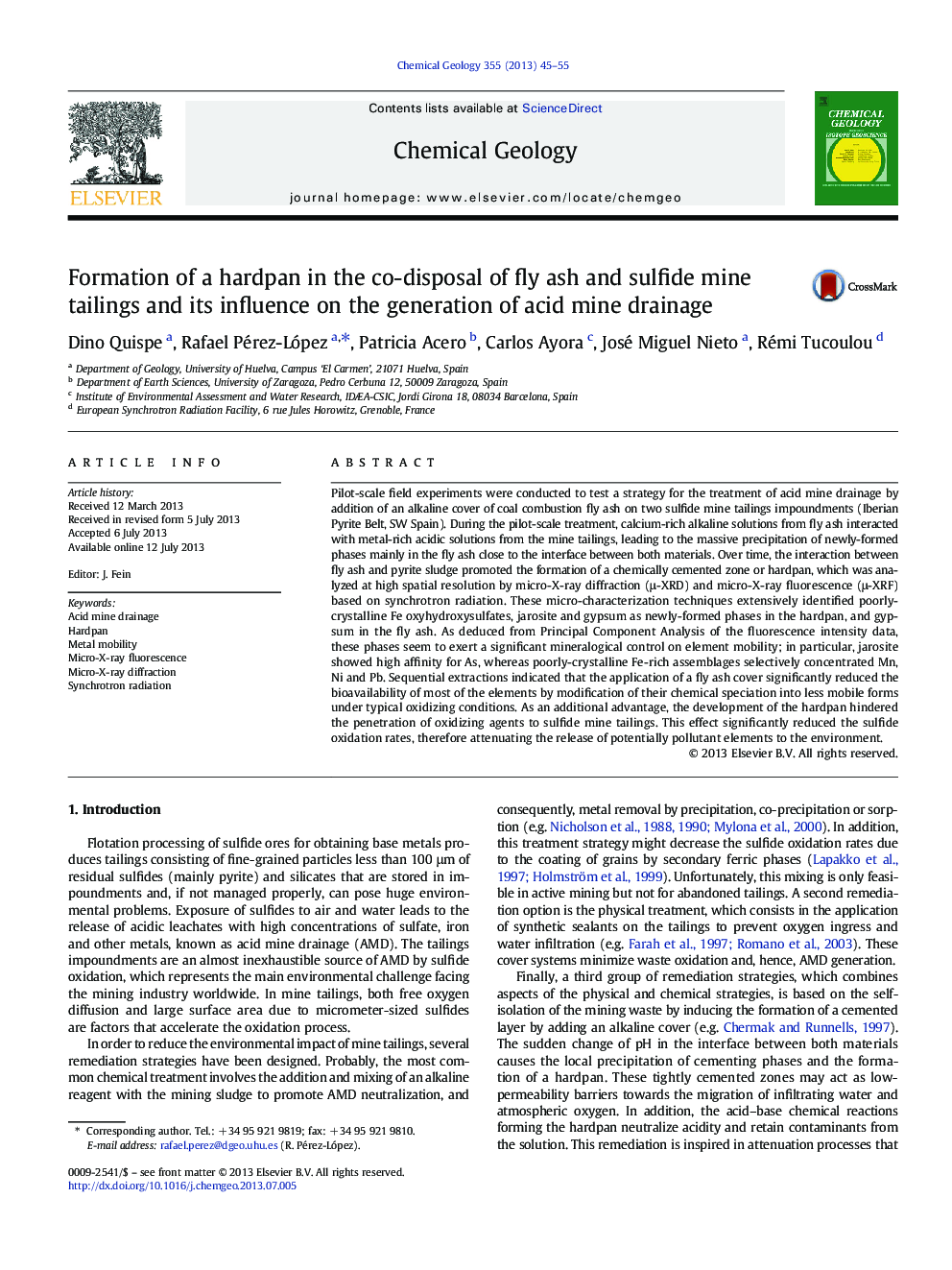| کد مقاله | کد نشریه | سال انتشار | مقاله انگلیسی | نسخه تمام متن |
|---|---|---|---|---|
| 6436789 | 1637614 | 2013 | 11 صفحه PDF | دانلود رایگان |
- A fly ash cover on sulfide tailings reduced contaminant mobility in two impoundments.
- In the interaction zone fly ash alkalinity induced the formation of a hardpan.
- Cementing phases were poorly-crystalline Fe oxyhydroxysulfates, jarosite and gypsum.
- Hardpan minimized sulfide oxidation and generation of acid mine waters.
Pilot-scale field experiments were conducted to test a strategy for the treatment of acid mine drainage by addition of an alkaline cover of coal combustion fly ash on two sulfide mine tailings impoundments (Iberian Pyrite Belt, SW Spain). During the pilot-scale treatment, calcium-rich alkaline solutions from fly ash interacted with metal-rich acidic solutions from the mine tailings, leading to the massive precipitation of newly-formed phases mainly in the fly ash close to the interface between both materials. Over time, the interaction between fly ash and pyrite sludge promoted the formation of a chemically cemented zone or hardpan, which was analyzed at high spatial resolution by micro-X-ray diffraction (μ-XRD) and micro-X-ray fluorescence (μ-XRF) based on synchrotron radiation. These micro-characterization techniques extensively identified poorly-crystalline Fe oxyhydroxysulfates, jarosite and gypsum as newly-formed phases in the hardpan, and gypsum in the fly ash. As deduced from Principal Component Analysis of the fluorescence intensity data, these phases seem to exert a significant mineralogical control on element mobility; in particular, jarosite showed high affinity for As, whereas poorly-crystalline Fe-rich assemblages selectively concentrated Mn, Ni and Pb. Sequential extractions indicated that the application of a fly ash cover significantly reduced the bioavailability of most of the elements by modification of their chemical speciation into less mobile forms under typical oxidizing conditions. As an additional advantage, the development of the hardpan hindered the penetration of oxidizing agents to sulfide mine tailings. This effect significantly reduced the sulfide oxidation rates, therefore attenuating the release of potentially pollutant elements to the environment.
Journal: Chemical Geology - Volume 355, 26 September 2013, Pages 45-55
